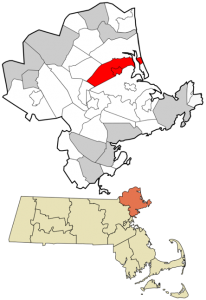About Rowley
Overview
Rich in history and culture, Rowley is an inviting and charming community. With a population of approximately 6,300, the community has a density of only 331 persons per square mile. Rowley has considerable preserved open space for its residents and visitors to enjoy.
History
In 1639, Rowley was originally settled as a plantation by Reverend Ezekiel Rogers, who had arrived from England on the ship John of London with approximately twenty families.
On September 4, 1639, the town was incorporated, and included portions of modern-day Byfield, Groveland, Georgetown, and Haverhill.
Agriculture and animal husbandry were the focus of the 17th century economy. In the mid 1600’s Rowley became known for its hemp and flax cloth, as well as cotton. In 1669, a sawmill was established in town and is still in business today. A carriage factory was built in 1868 by Moses E. Daniels. Later, at the start of the 20th century, the town had a booming shoe industry, as well as successful boat building businesses.
Location
Rowley’s 19.03 square miles is located in Essex County. Rowley is situated along the Atlantic Ocean north of Cape Ann, the mainland separated from the ocean by a small portion of Plum Island and Plum Island Sound. Rowley is located 32 miles north of Boston. It is bordered to the north by Newbury, to the northwest by Georgetown, to the west by Boxford, and to the south by Ipswich. Rowley has easy  access to other major cities via the convenient Interstate route of I-95. There are approximately 51 miles of plowed or maintained roads within the town.
access to other major cities via the convenient Interstate route of I-95. There are approximately 51 miles of plowed or maintained roads within the town.
Government
Rowley, like many New England towns, is governed by Town Meeting and a group of elected and appointed boards whose powers and authorities are enabled by numerous statutes in the General Laws of the Commonwealth of Massachusetts and the Town’s General By-laws. Over time this system has evolved to include a large number of departments, boards, committees and commissions, some of which employ staff members.
Town Departments are managed and operated by Town employees who are responsible for the day-to-day operation of the Town. Town Departments provide municipal services and attend to Rowley's ongoing business. Some Town Departments are supervised by an elected Town board or official.
Town Boards, Committees and Commissions are either elected or appointed. The residents who serve on these boards are volunteers who, for the most part, are unpaid. Certain boards, committees and commissions are empowered and regulated by Massachusetts General Law and the By-laws of the Town of Rowley. All meetings of official Town boards, committees and commissions are posted at least forty-eight hours in advance with the Rowley Town Clerk and are open to the public in accordance with the Open Meeting Law of the Commonwealth of Massachusetts.
The Selectmen are the chief elected officers of the Town. Town Meeting serves as the legislative branch of Town government.
Education
Rowley is a member of the Triton Regional School District, which serves the coastal towns of Newbury, Rowley and Salisbury. The District is comprised of one elementary school in each town for students in Pre-K through grade 6; the Triton Regional Middle School for students in grades 7 and 8; and the Triton Regional High School for students in grades 9 through 12. The elementary school in Rowley is the Pine Grove School, located at 191 Main Street. The Triton Regional Middle School and Triton Regional High School share a campus located at 112 Elm Street in Byfield, a village of the town of Newbury.
Rowley is one of eleven member communities served by the Whittier Regional Vocational Technical School, for students in grades 9 through 12.
Rowley students in grades 9 through 12 may also apply for enrollment in various Agricultural Programs at the Essex North Shore Agricultural & Technical School located in Danvers, Massachusetts. Please contact the Admissions Office at 978-304-4700 extension 5106 for more information.

